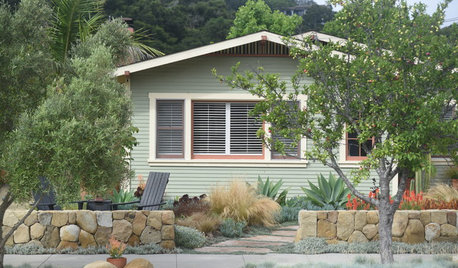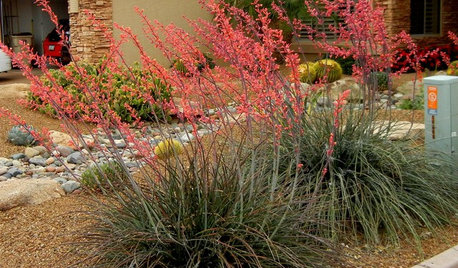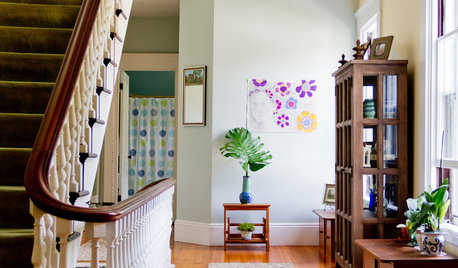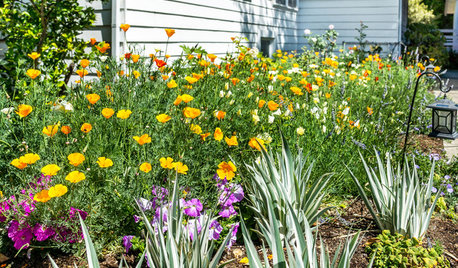Dirt drying out and not absorbing water
CrosStitching
9 years ago
Related Stories

GARDENING GUIDESGet the Dirt on Your Garden’s Soil
Understand how your soil supports your plants so you can ensure your garden’s success
Full Story
LANDSCAPE DESIGNDitch the Ordinary Ditch: Create a Realistic Dry Creek Bed
Here’s how to turn your water runoff system into an eye-catching accent for your landscape
Full Story
LANDSCAPE DESIGNHow and What to Plant in Dry, Sunny Spots
Save water and improve your site’s look with these design tips and help from a pro
Full Story
GARDENING FOR BUTTERFLIESGreat Design Plant: Red Yucca Spikes Dry Spots With Color
Neither heat nor cold nor lack of water fazes this flowering succulent, which adds spiky texture to Southwestern landscapes
Full Story
LANDSCAPE DESIGNLandscaping Tricks to Manage Stormwater Runoff
Help rainwater absorb slowly back into the earth with paving grids, gravel beds and other porous systems
Full Story
HEALTHY HOMEGet the Lead Out: Lead Safety at Home
Keep your family safe by properly testing for and dealing with lead in old painted surfaces, water and soil
Full Story
GARDENING GUIDES6 Native Ground Covers for Tough, Dry Spots
Sun beating down on your sandy gravel? Thick shade darkening your clay soil? There’s a ground cover here for you
Full Story
GARDENING GUIDESGreat Design Plant: Anemone Canadensis Adds Pizzazz to Water’s Edges
Plant Canadian anemone along pond, lake or stream edges for a splash of white flowers in late spring
Full Story
LANDSCAPE DESIGN10 Ideas for a Creative, Water-Conscious Yard
Check out these tips for a great-looking outdoor area that needs less water
Full Story
GARDENING GUIDESEssential Watering Tips for Your Edible Garden
To give your edible plants just what they need, check out these guidelines for how, when and how much to water
Full StorySponsored
Columbus Area's Luxury Design Build Firm | 17x Best of Houzz Winner!




Kimmsr
johns.coastal.patio
Related Discussions
Over Watered, not drying out, plastic pot -- repot?
Q
Miracle grow mix not absorbing water
Q
Water-absorbing plants
Q
Ficus leaves turning yellow, plant root bound, not absorbing water
Q
mad_gallica (z5 Eastern NY)
gardenper
gardengal48 (PNW Z8/9)
turaloora
cold_weather_is_evil
luckygal
nil13
Mackel-in-DFW
Mackel-in-DFW
cold_weather_is_evil
Mackel-in-DFW
User
gardengal48 (PNW Z8/9)
david52 Zone 6
johns.coastal.patio
CrosStitchingOriginal Author
johns.coastal.patio
JoppaRich
nil13
nil13
johns.coastal.patio
johns.coastal.patio
Laurel Zito
Mackel-in-DFW
nil13
Mackel-in-DFW
cold_weather_is_evil
nil13
Mackel-in-DFW
Mackel-in-DFW
toxcrusadr
Mackel-in-DFW
Mackel-in-DFW
Mackel-in-DFW
Mackel-in-DFW
Mackel-in-DFW
Mackel-in-DFW